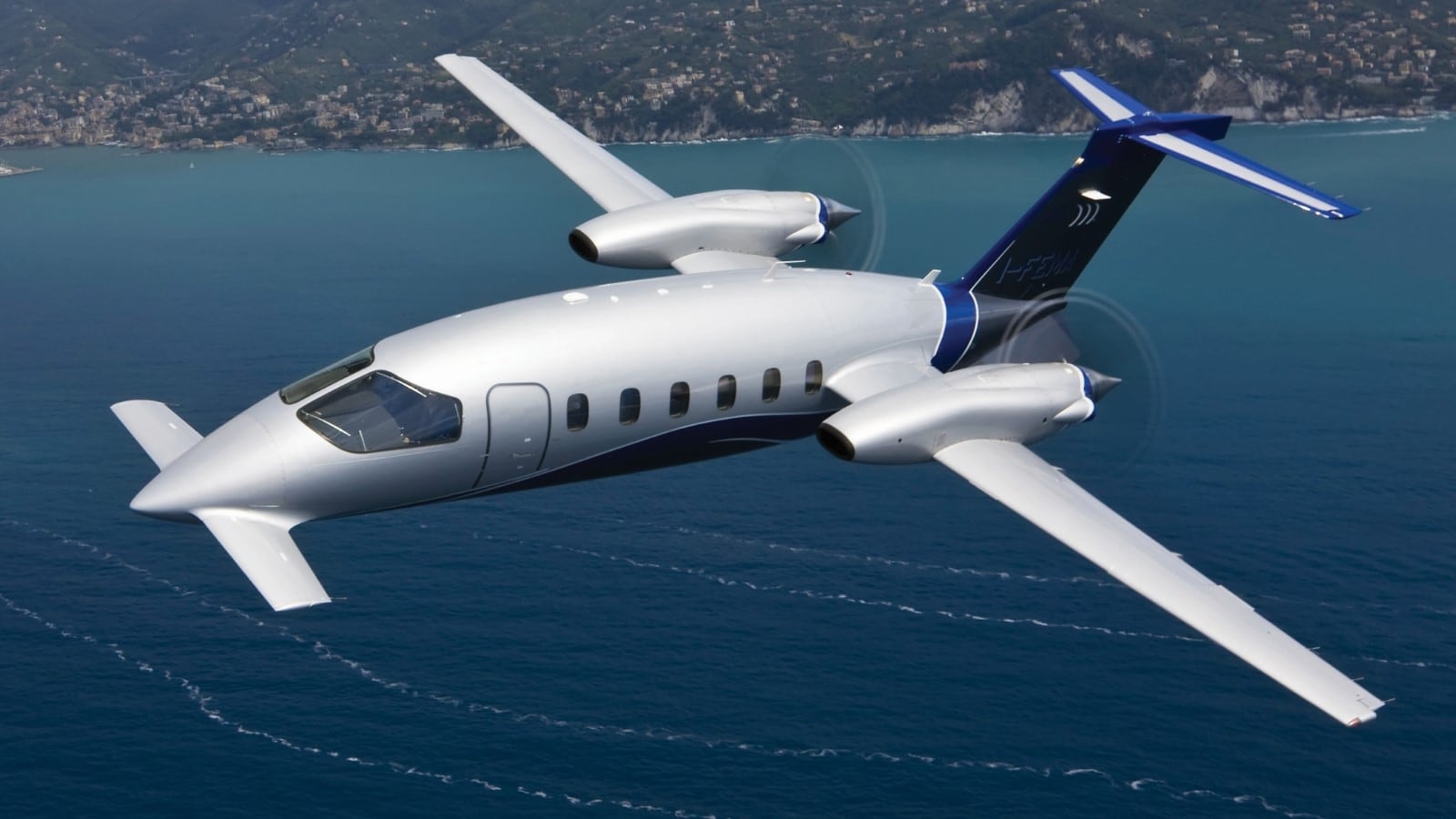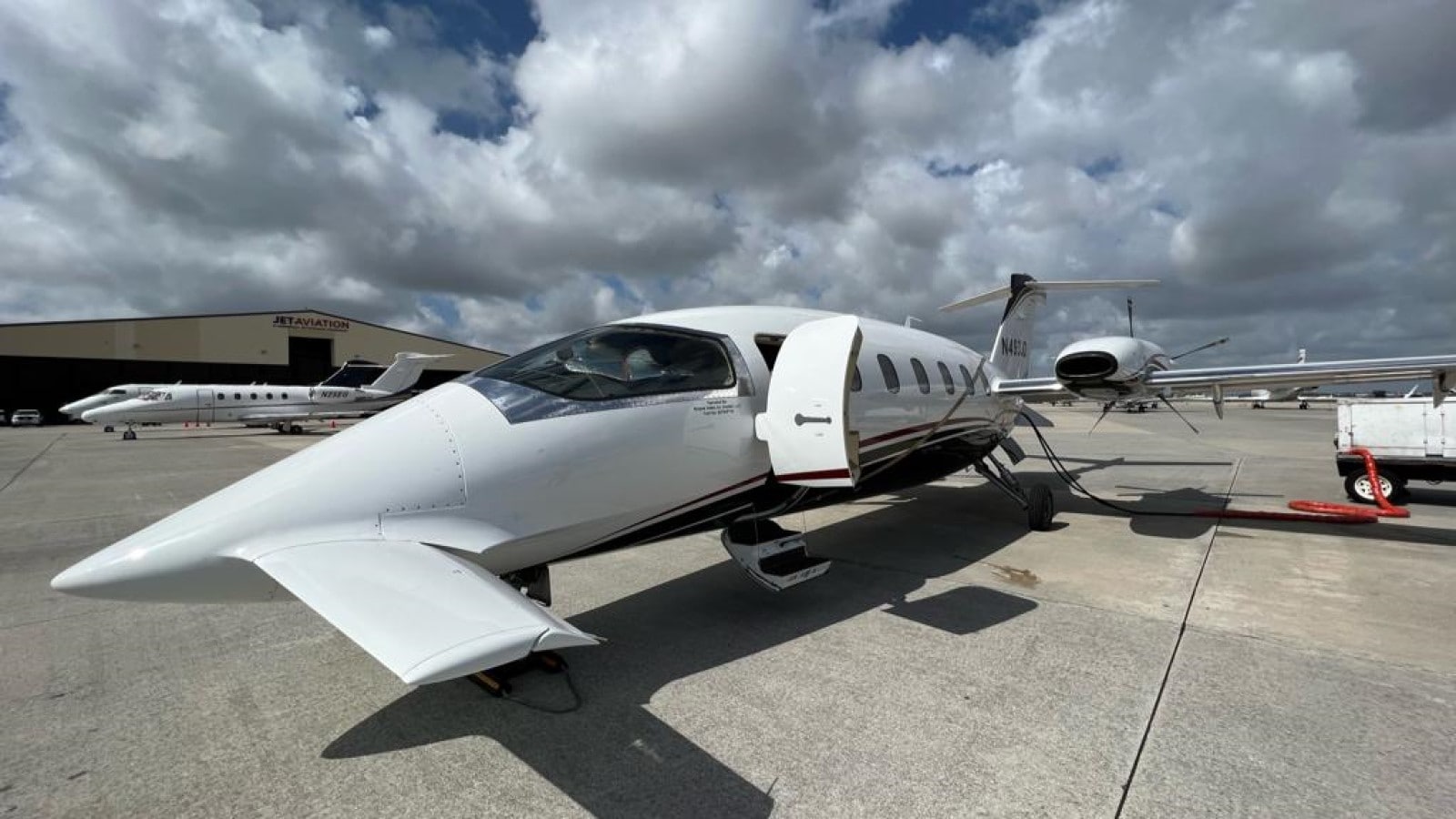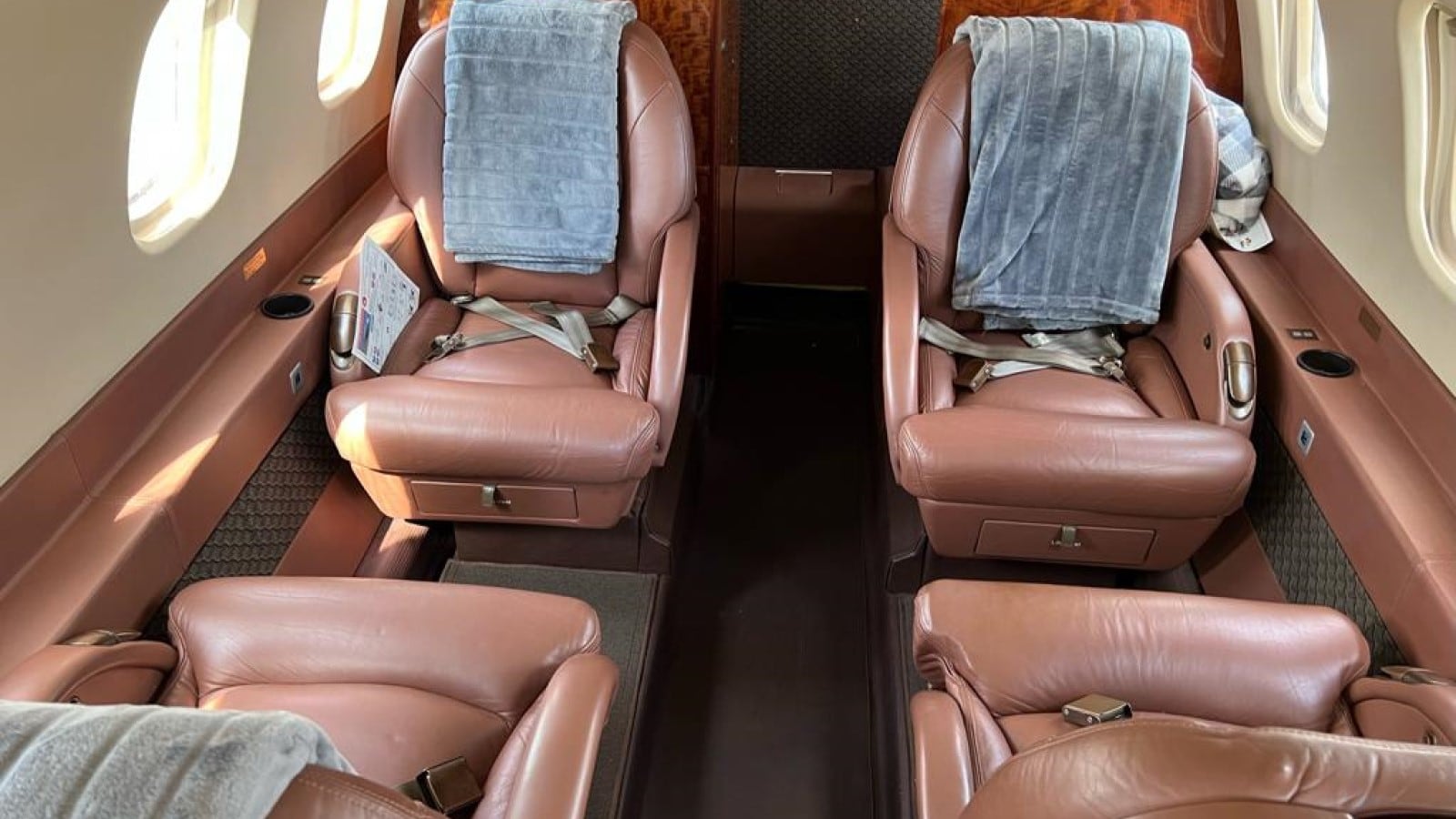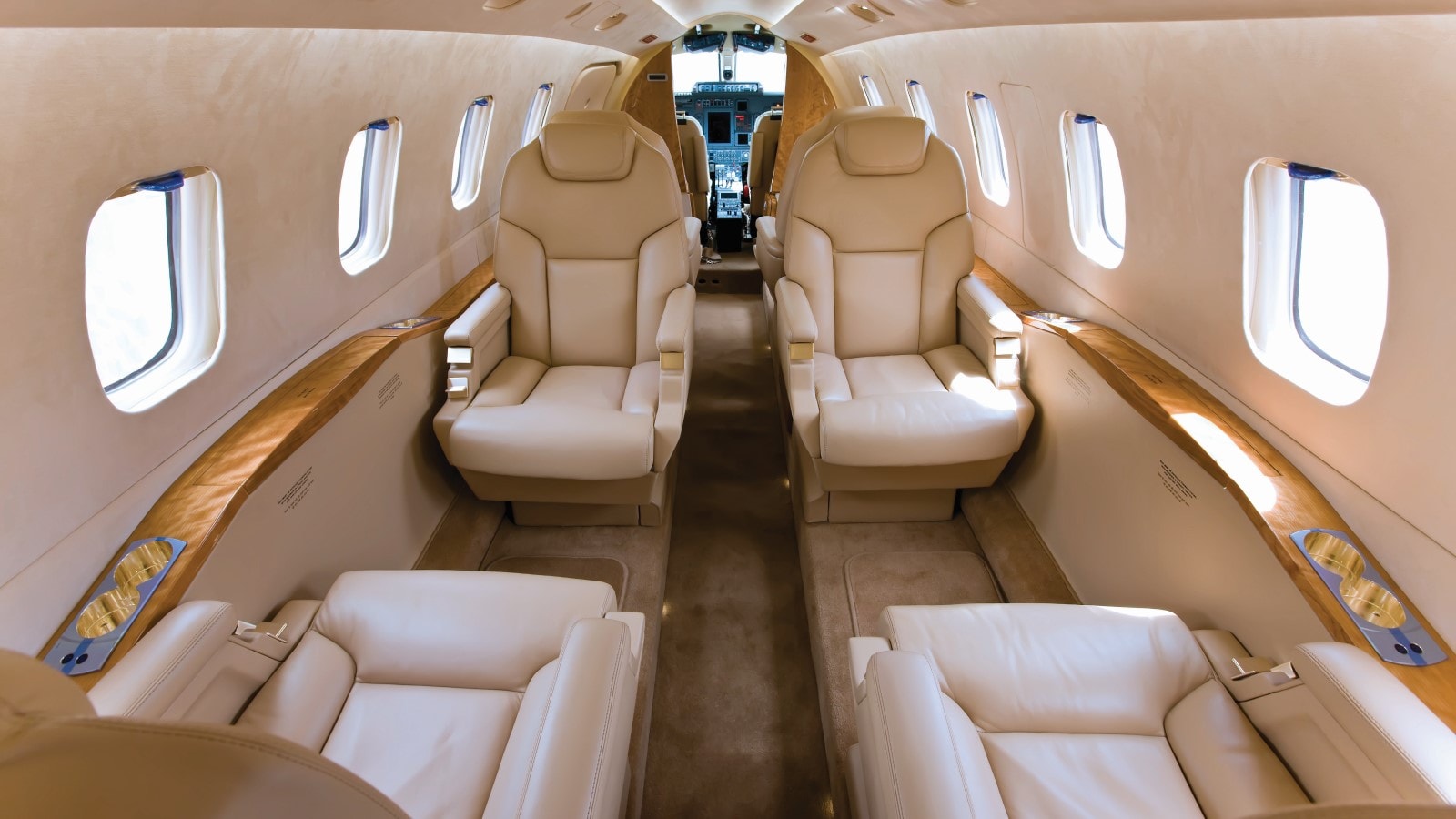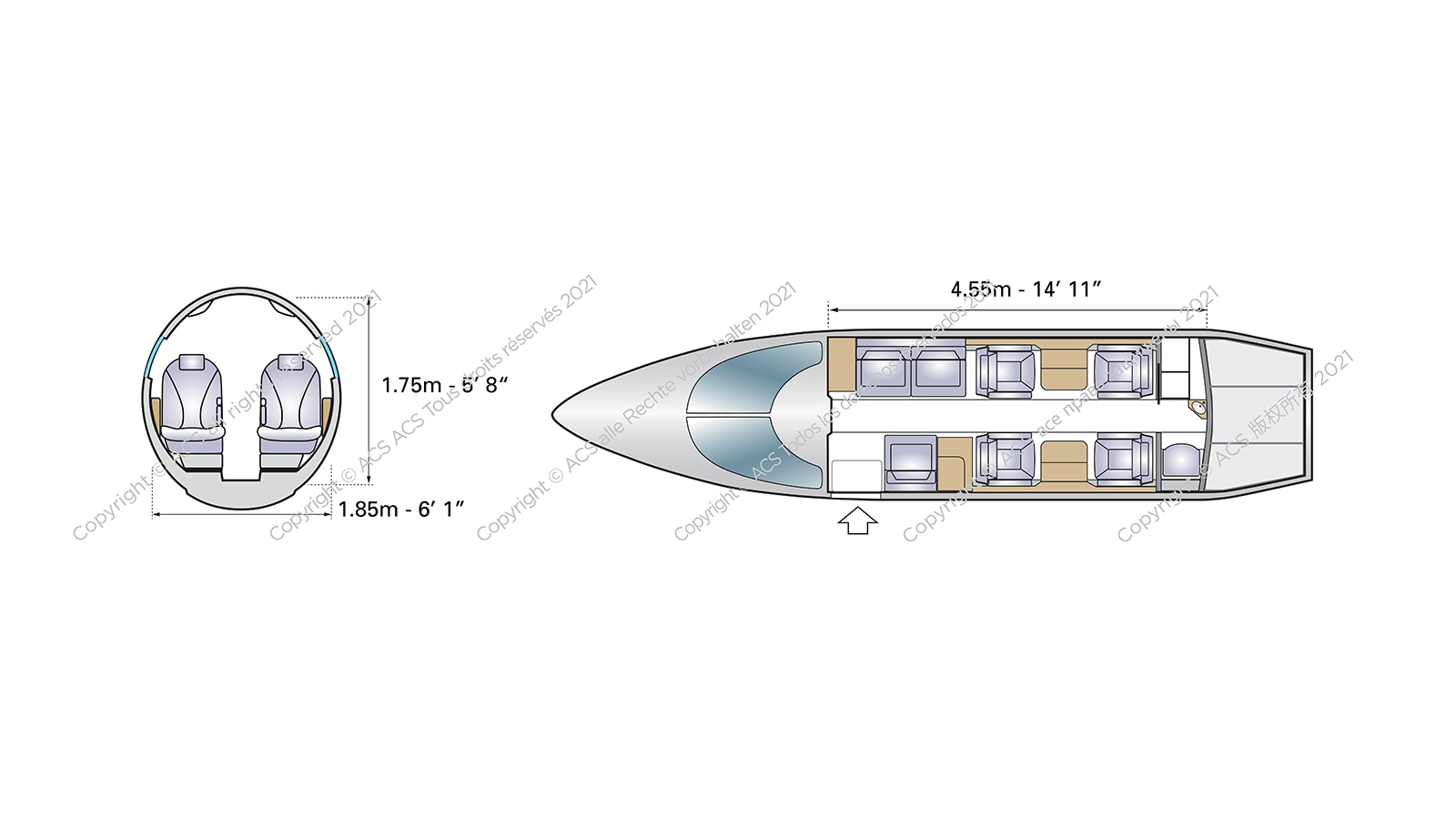PIAGGIO AVANTI P180 II
- Passengers 7
Uniquely designed and brilliantly crafted, the Piaggio P180 Avanti II combines the performance of a light jet with the versatility of a turboprop.
About this aircraft
- The Piaggio P180 Avanti II was certified in 2005.
- Its cabin is typically laid out for seven passengers, with an extra seat in the enclosed lavatory if required. A further passenger can be seated in the cockpit with a single pilot if the aircraft is owned, but this isn’t available with a charter.
- The Piaggio P180 Avanti II is capable of flying non-stop from London to Cannes or New York to Chicago, however its normal range with passengers is substantially less.
- The external baggage compartment is large enough for five suitcases.
- In 2014, Piaggio announced the development of an upgrade called the Avanti EVO.
It’s rare to find a comfortable, spacious and quiet interior on a turboprop, but the uniquely designed P180 Avanti II achieves it, whilst also boasting a maximum speed that competes with light jets.
Interior design
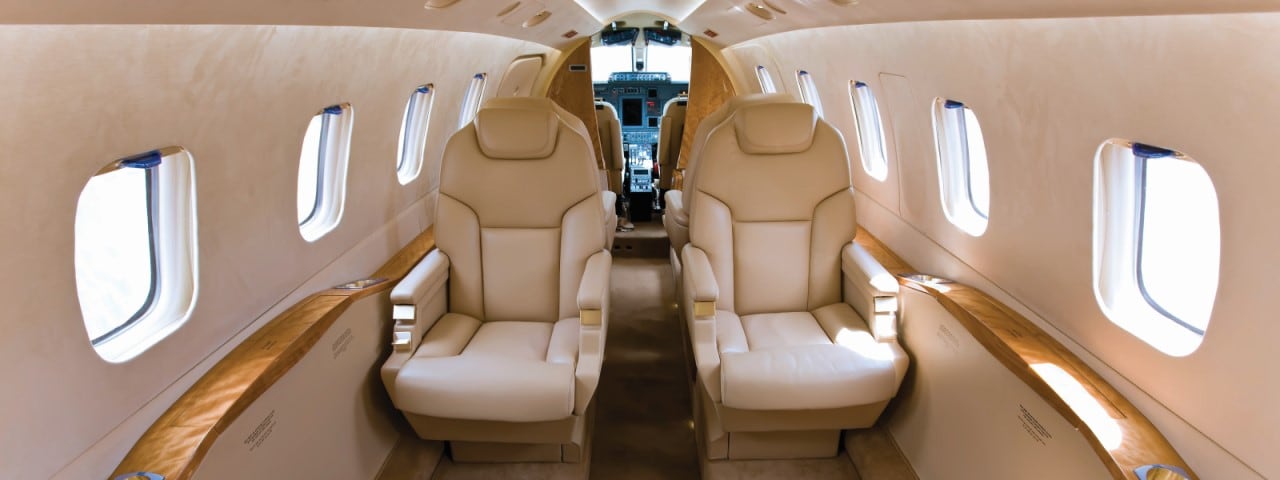
The Piaggio P180 Avanti II’s spacious cabin offers an extra foot of space, length and width than the average light jet. Seating seven passengers, it’s typically configured with a two-seat divan and a single seat at the front, plus four seats in a club formation at the rear.
The Italian aircraft’s luxurious interior features subtle overhead LEDs, custom-designed silk carpets and Spinneybeck Espana leather seat cushions.
Below is a typical configuration found on a Piaggio P180 Avanti II.

Interesting facts to learn before you fly
- The aircraft’s propellers and engine exhausts are located behind the cabin, meaning passengers experience very little vibration or noise while flying.
- The Piaggio P180 II surpasses the average high-speed cruise distance of competing jets, with a maximum range of around 2,795 km.
- As a result of less drag and a lower fuel burn rate, the Piaggio Avanti II is faster than other turboprops and even comes close to some midsize jets.
- The newer Avanti EVO has curved props and small winglets, which increase the aircraft’s maximum speed while reducing noise levels in the cabin.
Technological features
The Piaggio P180 Avanti II is powered by two PT6A-66B turboprop engines, which were upgraded from the PT6A-66 engines used on the older P180 Avanti model.
The cockpit features Collins ProLine 21 avionics, with all primary flight, navigation, engine and sensor data graphically presented on three large liquid crystal displays for easy scanning and optimum situational awareness. Fully integrated with all onboard avionics sensors, the standard pilot and copilot primary flight displays are paired with an enhanced central multifunction display, Collins Aerospace FMS-3000 flight management system and a centrally positioned radio tuning unit to streamline and automate input functions.
History
In 1979, Piaggio began developing a new-generation business aircraft aimed at wealthy Fortune 500 companies. The first Piaggio P180 Avanti prototype flew in 1986 and Italian certification was received in March 1990. Fuselages were made in Kansas and flown to Italy for final assembly, before financial problems stalled production. A group of investors led by Ferrari vice-president Piero Ferarri helped relaunch the project in 1998, with around 100 aircraft delivered by 2005.
The Avanti II launched in 2005 as a more fuel-efficient upgrade, boasting Pratt & Whitney Canada PT6A-66B turboprop engines and all-new Rockwell Collins glass panel avionics. A reported 70 planes were ordered within six months of receiving European and U.S. certification. A longer-range variant called the Avanti EVO followed in 2014 with new winglets, composite propellers and an additional 60-gallon fuel tank.
Manufacturer
Headquartered in Villanova d'Albenga, Italy, Piaggio Aerospace is one of the world's oldest aircraft manufacturers. It was founded in 1882 as a locomotive and railway carriage maker, before moving into plane-building during the First World War. In 1966, the business was divided into aviation-focused Piaggio Aero and motor-scooter brand Vespa.
Piaggio hit financial troubles in the late 1990s and was saved by a group of investors. Despite the P180's success, the business went bankrupt in 2018, blaming a lack of orders from the United States following the 2008 financial crisis. In 2019, the Italian government stepped in with orders worth around $760 million (USD) to boost Piaggio’s attractiveness to potential buyers.
Cost
Depending on factors like age and condition, the average price for a used Piaggio P180 Avanti II costs $2.5 million (USD).
Charter rates
Charter rates for the Piaggio P180 Avanti II vary depending on the length of your journey and the airports you’re flying in and out of.
If you’d like to charter a Piaggio P180 Avanti II, contact our team for a quote today. For information on other charter options, browse our list of available private aircraft.
Wet lease rates
ACMI (Aircraft, Crew, Maintenance, Insurance) wet lease rates for the Piaggio P180 Avanti II vary depending on the age of the aircraft, lease term length, number of guaranteed block hours and average cycle ratio. Contact us for a personalised quote.
